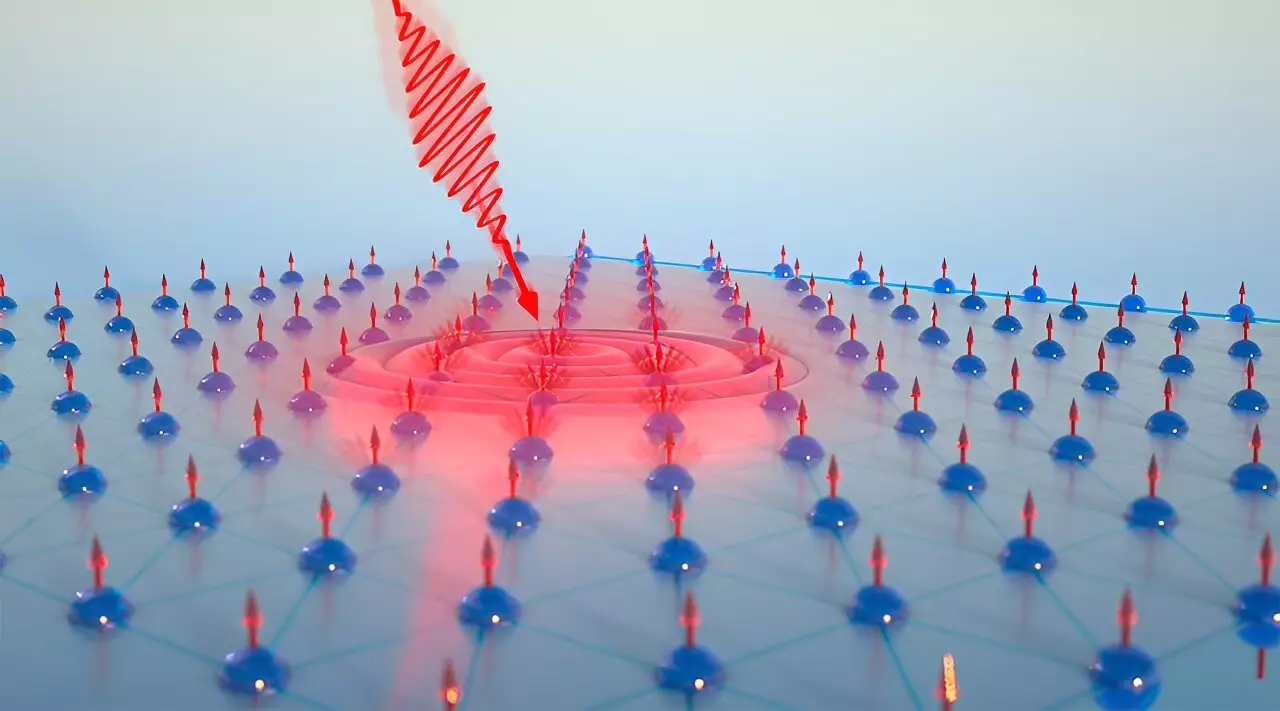In the realm of data storage, efficiency and speed are paramount. Researchers at the University of Chicago Pritzker School of Molecular Engineering have recently illuminated the path toward a transformative optical memory solution using a novel complex material: manganese bismuth telluride (MnBi2Te4). This discovery signals a potential shift in how we encode and retrieve computational data, thanks to the intriguing interplay between light and magnetism within this mineral composition.
The core of this research goes beyond mere experimentation; it integrates fundamental science with practical engineering applications. As Shuolong Yang, the lead author of the study, insights into this new material have revealed previously unrecognized properties that could enhance the efficacy of data storage systems. The unexpected behavior of MnBi2Te4 in response to light serves as a testament to the untapped potential in conventional materials, encouraging a more profound exploration of their underlying mechanisms.
Understanding the Topological Competition
At the heart of the investigation lies a complex relationship among the electrons within MnBi2Te4. These electrons face competition between two distinct states: one that facilitates quantum information storage and another that is highly responsive to light, promoting optical storage capabilities. Such dynamics are critical in the development of effective new data storage methods, particularly in a world increasingly reliant on quantum computing and advanced electronic systems.
Previously recognized primarily for its magnetic topological insulator potential, MnBi2Te4 has been challenging to manipulate experimentally. The material’s prediction to host a two-dimensional current flow, akin to an “electron freeway,” has tantalized researchers for years. Nonetheless, these anticipated properties remained elusive until Yang and his team decided to delve deeper into the material’s electron dynamics.
To unlock these mysteries, researchers employed groundbreaking spectroscopic techniques. By utilizing time- and angle-resolved photoemission spectroscopy combined with time-resolved magneto-optical Kerr effect experiments, the team was able to obtain real-time insights into the behavior of electrons within MnBi2Te4. Their findings revealed significant interactions between the electron dynamics and external light, illuminating the reasons behind the material’s failure to exhibit the anticipated topological properties.
A critical revelation emerged: instead of the expected topological surface electrons, a quasi-two-dimensional state arose, competing fiercely for electrical charge. While this might seem like a setback for topological applications, it unexpectedly provided significant advantages for developing optical memory. The tight coupling of this quasi-2D state with external photons illustrates a promising mechanism for enhanced data storage efficiency.
Looking ahead, Yang’s research team is enthusiastic about the potential applications of their findings. By experimenting with laser manipulation of MnBi2Te4’s properties, they aim to spearhead the development of optical memory technology that could far exceed the performance of existing electronic memory systems, boasting orders of magnitude in efficiency.
Moreover, understanding the competing electronic states in MnBi2Te4 not only fuels the optical memory discourse but also emphasizes the significance of maintaining a balance between these states to enhance the material’s viability as a magnetic topological insulator. “Tuning” this balance might be the key to simultaneously harnessing the best qualities of both states, potentially leading to groundbreaking advancements in quantum data storage methodologies.
A Paradigm Shift in Data Storage Efficiency
As discoveries such as those at the University of Chicago shed light on the intersection between novel materials and advanced engineering applications, society stands on the brink of a notable transformation in data storage technology. The integration of findings related to MnBi2Te4 delivers not only insights into fundamental materials science but also promises revolutionary enhancements in how we perceive and utilize data storage techniques in an increasingly digital world.
Ultimately, this research embodies the essence of scientific inquiry—transforming curiosity-driven exploration into pragmatic applications—and paves the way for future innovations that will redefine the landscape of data management and technology.


Leave a Reply